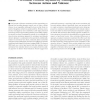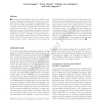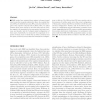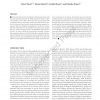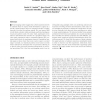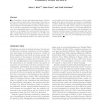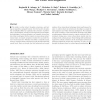JOCN
2010
13 years 10 months ago
2010
■ Goal pursuit in humans sometimes involves approaching unpleasant and avoiding pleasant stimuli, such as when a dieter chooses to eat vegetables (although he does not like them...
JOCN
2010
13 years 10 months ago
2010
■ Research in psycholinguistics and in the cognitive neuroscience of language has suggested that semantic and syntactic integration are associated with different neurophysiologi...
JOCN
2010
13 years 10 months ago
2010
■ fMRI studies have reported three regions in human ventral visual cortex that respond selectively to faces: the occipital face area (OFA), the fusiform face area (FFA), and a f...
JOCN
2010
13 years 10 months ago
2010
■ Several theories of the mechanisms linking perception and action require that the links are bidirectional, but there is a lack of consensus on the effects that action has on p...
JOCN
2010
13 years 10 months ago
2010
■ Neuroimaging studies suggest that a fronto-parietal network is activated when we expect visual information to appear at a specific spatial location. Here we examined whether a...
JOCN
2010
13 years 10 months ago
2010
■ Decision-making about affective value may occur after the reward value of a stimulus is represented and may involve different brain areas to those involved in decision-making ...
JOCN
2010
13 years 10 months ago
2010
■ Is morphology a discrete and independent element of lexical structure or does it simply reflect a fine-tuning of the system to the statistical correlation that exists among or...
JOCN
2010
13 years 10 months ago
2010
JOCN
2010
13 years 10 months ago
2010
■ We employ a single-trial correlational MEG analysis technique to investigate early processing in the visual recognition of morphologically complex words. Three classes of affi...
JOCN
2010
13 years 10 months ago
2010
■ The ability to stop ongoing motor responses in a splitsecond is a vital element of human cognitive control and flexibility that relies in large part on prefrontal cortex. We u...
